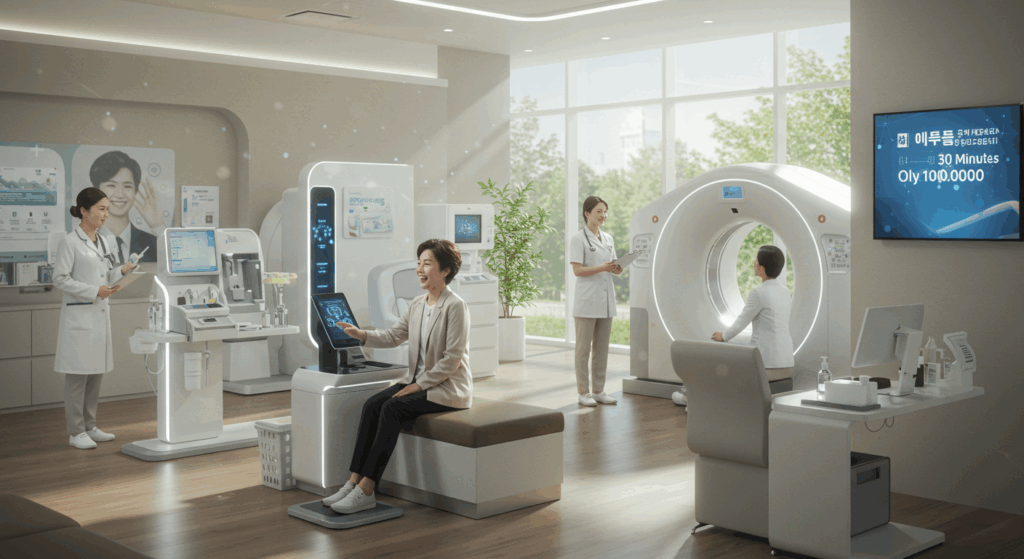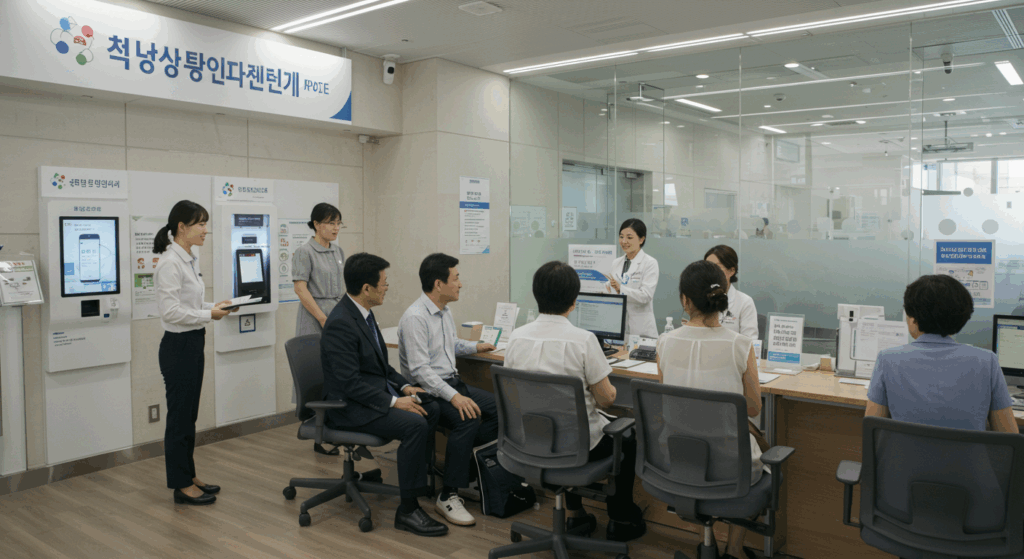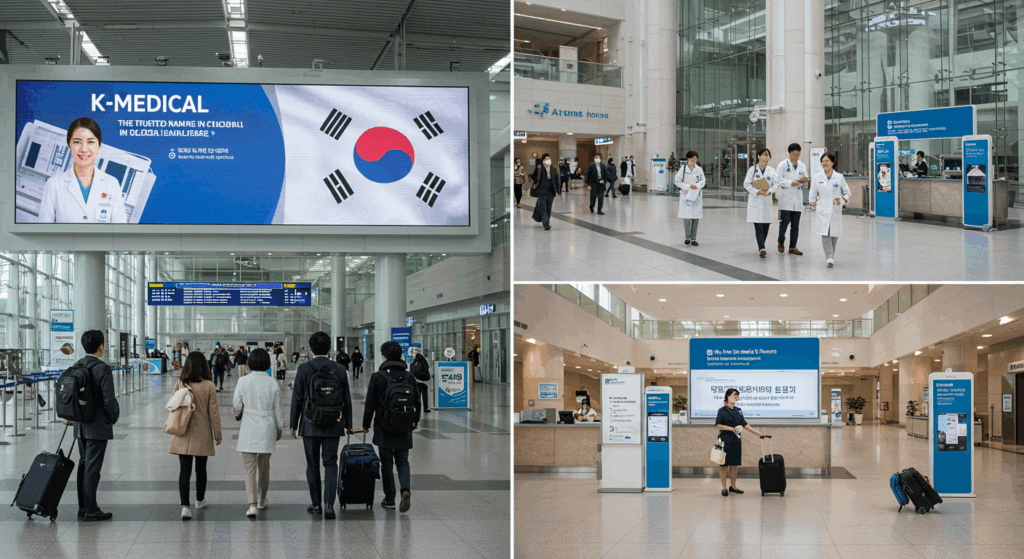A Hidden Gem That Surprises Many Foreign Visitors: South Korea’s Medical System
One area that often amazes visitors to South Korea is its medical services.
Even for something as simple as a cold, patients in Korea can typically see a doctor, get a prescription, and even undergo a CT scan—all on the same day. And it’s surprisingly affordable. To many foreigners, Korea feels like a true “medical paradise.”
✅ Walk-In Clinics Without Appointments? Fast and Efficient Healthcare
In many developed countries, booking a doctor’s appointment requires scheduling weeks in advance.
But in Korea, you can walk into most primary care clinics (internal medicine, ENT, orthopedics, etc.) without an appointment and finish your consultation, prescription, and pharmacy visit—all within 1–2 hours.
- U.S.: Average wait time for a specialist: 2–4 weeks
- Germany: 1–2 weeks for a first visit, several months for detailed tests
- South Korea: Most internal/surgical care available immediately
For Koreans, this is just part of daily life. For foreigners, it’s surprisingly efficient.
✅ Comprehensive Health Screenings—At a Fraction of the Cost

Korea’s health screening system is also gaining global recognition.
Government-supported checkups are free or low-cost through the National Health Insurance Service (NHIS), and premium health screening centers can complete MRI, endoscopy, blood tests, and ultrasounds in a single day.
- U.S.: Full-body MRI: ~$1,000–$2,000
- Korea: Premium full checkup: ~$300–$500
These screenings offer both accuracy and speed in early detection of cancer, dementia, and heart conditions—prompting a rise in medical tourists visiting Korea for checkups.
✅ Universal Health Coverage for All Citizens

Over 98% of South Koreans are covered by the national health insurance system.
They pay monthly premiums based on income and only bear 30% or less of most medical costs.
For example, visiting a clinic for a cold and getting medicine typically costs less than 10,000 KRW (under $10).
This widespread health coverage earns Korea both trust and admiration from foreign visitors.
Additionally, private health insurance supplements the system, reducing the financial burden of major surgeries or hospitalizations.
✅ South Korea: A Rising Medical Tourism Hub
K-Medical is now being exported.
According to the Ministry of Health and Welfare, over 400,000 foreign patients visited Korea in 2023. Popular services include:
- Plastic surgery and dermatology (cosmetic care)
- Health checkups, internal medicine, and spine clinics
- Dental treatments and traditional Korean medicine
Visitors from countries like the UAE, Russia, Mongolia, Kazakhstan, and Southeast Asia are increasingly choosing Korea for “treatment + travel” packages.
✅ What Drives K-Medical’s Global Appeal?
- Skilled doctors and short wait times
- Cutting-edge medical equipment and IT-integrated systems
- High-quality services at reasonable costs
- Well-developed infrastructure combining healthcare with tourism
- Balanced public and private sector cooperation
These factors combined have turned Korean healthcare into a core pillar of national competitiveness—not just a public service.
Conclusion – A Country That Built a National Brand Through Healthcare

Korea’s healthcare system is more than just a way to treat illness.
It offers fast, accurate, affordable, and compassionate care—accessible to all. That’s something rare, even on a global scale.
Now, beyond K-pop and K-dramas, the world is turning its attention to a new rising brand: K-Medical.
🔗 Watching Korea’s Story Together, One Series at a Time
